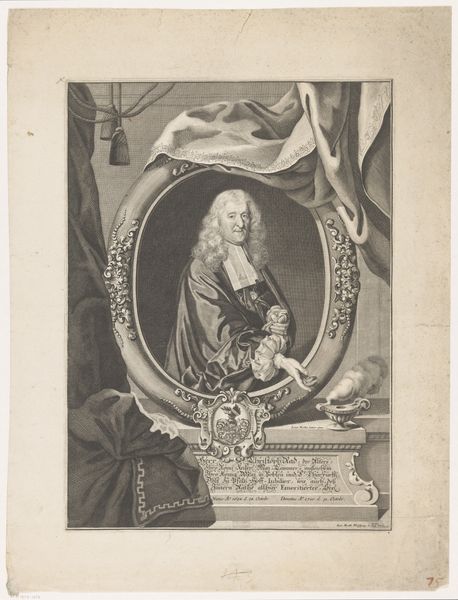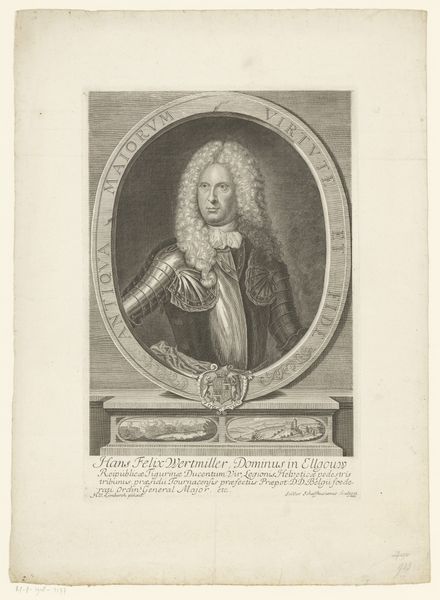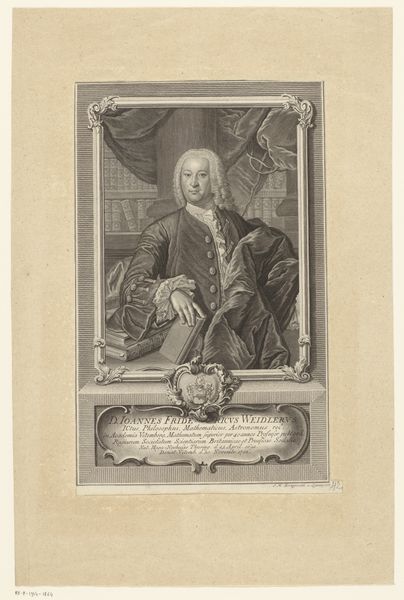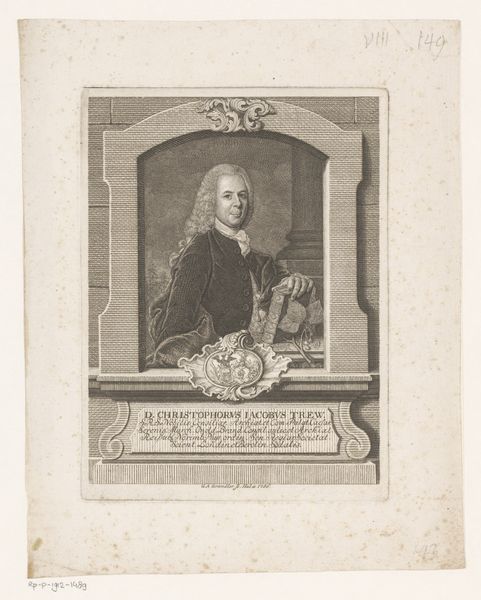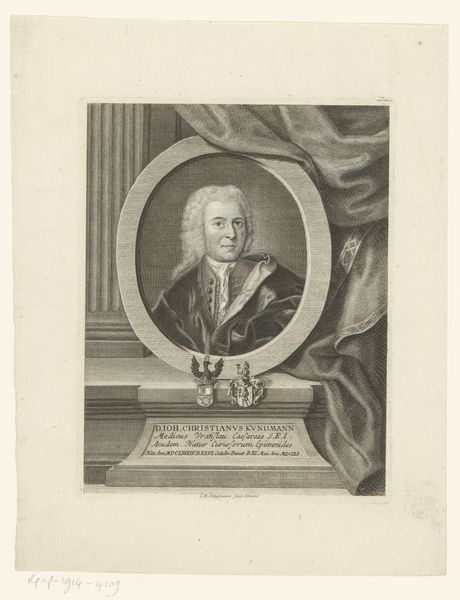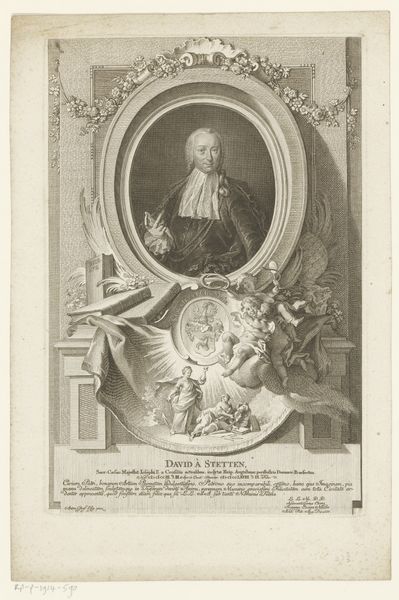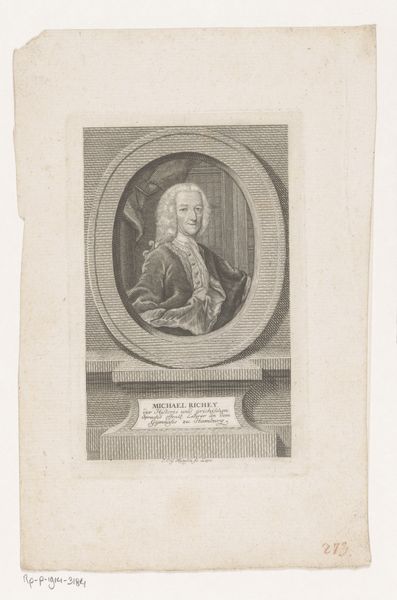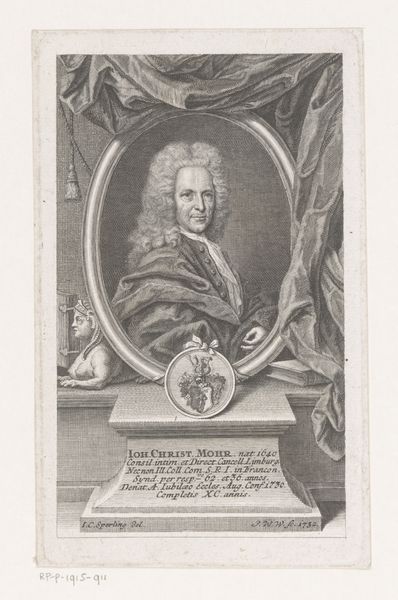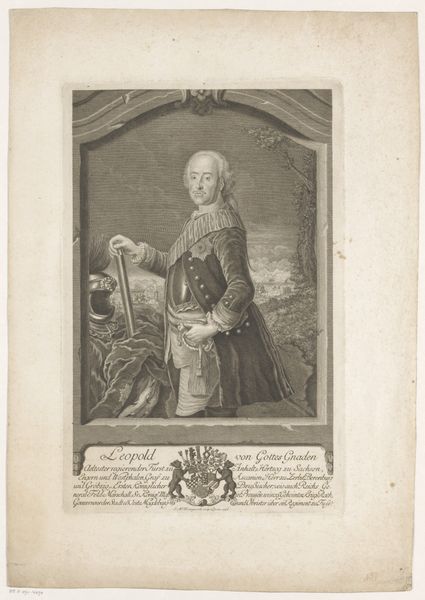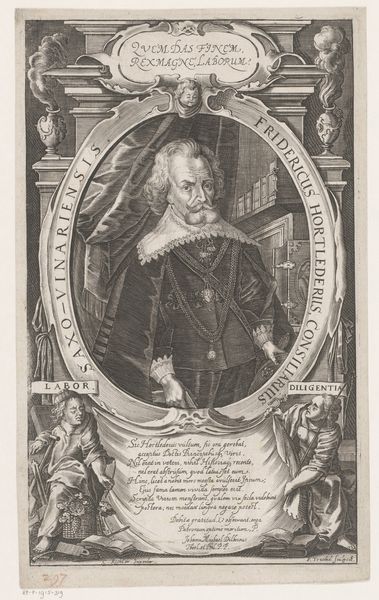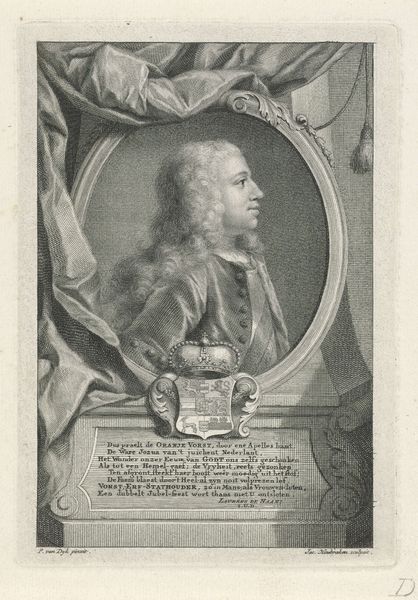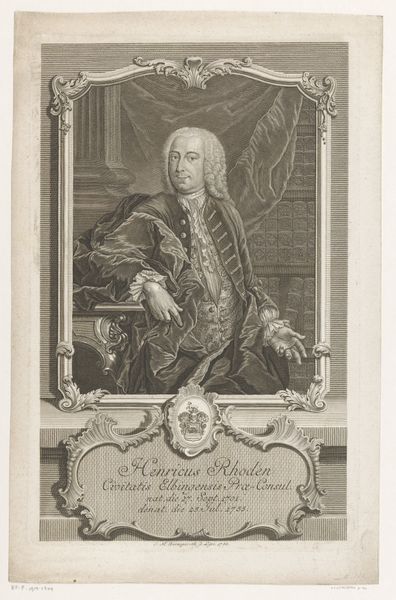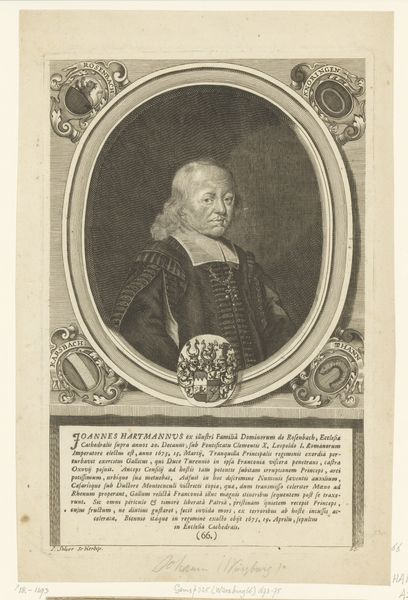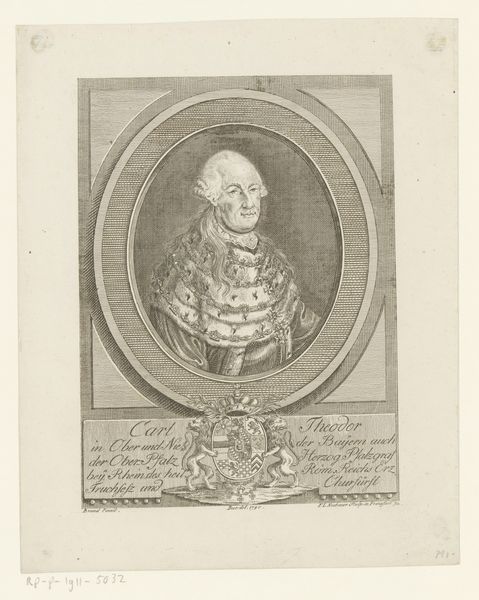
print, engraving
#
portrait
#
baroque
# print
#
history-painting
#
engraving
Dimensions: height 206 mm, width 149 mm
Copyright: Rijks Museum: Open Domain
Editor: This engraving, "Portret van Johann Christian Cuno," by G.J. Marstaller, from 1746, strikes me as being quite... scholarly? All those books and papers create an intense mood, yet the central figure seems so relaxed and confident. How do you interpret this work? Curator: It's interesting you picked up on the scholarly atmosphere. Think about what "scholar" meant in 1746. The burgeoning Enlightenment emphasized reason and individual achievement. Consider, then, who could access education and portray themselves as learned? Cuno, whose portrait centers around emblems of scholarship, likely possessed elite status reinforced by gender, race, and class. This image acts as a carefully constructed piece of propaganda: what values do you think it's trying to convey, and for whom? Editor: I guess it projects Cuno as educated and affluent… therefore someone worthy of respect and influence. I hadn't really considered that it also shuts out anyone without that same access. Curator: Exactly. How does this portrait differ from those depicting everyday laborers from the same era? Editor: While this image celebrates academic elitism, those might focus on a different kind of skill or ingenuity and on less-privileged social groups. Curator: Precisely! Recognizing this portrait within its specific time enables us to understand power structures. What begins as a representation of an individual evolves into an artifact unveiling deep inequalities. Now, what social codes and norms, specifically, are being communicated? Editor: I now realize this portrait serves not just as a likeness, but as a political tool. I am seeing how an artwork encodes biases prevalent in a certain period. Curator: Precisely. By interrogating art's role in constructing such systems, we gain a richer understanding of both its time and our own.
Comments
No comments
Be the first to comment and join the conversation on the ultimate creative platform.
